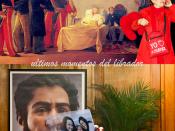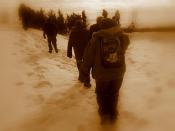The role of the media in public perception of New Religious Movements, with special reference to groups where violence has occurred.
Introduction
The media often refers to groups whose faith is different to the traditional religions as "cults", as opposed to alternative or new religious movements (from here on referred to as NRM's). The word "cult" has become imbued with all sorts of negative emotional connotations. The general public perception of cults is that they are something that should be hated, feared or at least avoided and cult members are regarded as brainwashed or people already prone to psychological problems, or at the very least "weak" and misguided. They are portrayed as violent and destructive. To what degree has the media been responsible for this perception, and how accurate is this popularly held view?
The information that public perception is based on.
In this day of the fast-paced life, very few individuals will seek out knowledge on NRM's unless they have a specific interest in that area.
Few people ever read literature or pamphlets from a NRM and neither do they make contact with the movement directly in order to learn more about it. The numbers of members of NRM's is still modest and so only a small percentage of the population is directly touched by NRMs.
A lack of information leads to misunderstanding and conflict. This lack of information and understanding applies not just to NRM's but to all things religious as society becomes more and more secular. Therefore, the media plays an important role in informing the public. Although they cannot tell the public what to think, because the public tend to rely on the media for most of their information, what is portrayed and how it is portrayed has a great influence on forming public opinion.


